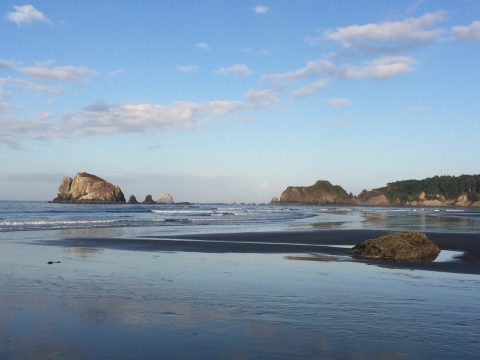
We all know the Olympic Coast is a special place...whether it's the clean water and beaches, access to the ocean, or the unobstructed natural views...coastal recreation in and adjacent to the Olympic Coast National Marine Sanctuary is a significant driver for economic contributions to the Washington coastal economy and a key reason why people come to visit.
In 2014-15, we led a coastal study that was conducted on the outdoor recreation activities of Washington households on the Outer Coast of Washington. The primary focus was on the entire Outer Coast of Washington to support the State’s Marine Spatial Planning Initiative and on the Olympic Coast National Marine Sanctuary (OCNMS) to support their socioeconomics action plan. Socioeconomic profiles were created for the entire study area and for OCNMS. For OCNMS, socioeconomic profiles were created for sanctuary waters, sanctuary waters with a two kilometer buffer along the coast, and a small section of the Port Angeles waterfront around the sanctuary office and visitor center.
The socioeconomic study of the OCNMS takes a deeper dive from our study into the area surrounding the Sanctuary and breaks it down into three volumes. Volume 1 focuses on socioeconomic profiles, including demographic profiles of users (e.g. age, gender, race/ethnicity, marital status, education level, household size, housing type, employment status, household income and place of residence, (e.g. zip code and county); uses (activity participation rates, person-trips and person-days by activity type), and expenditures per person-trip, per person-day, and total expenditures by expenditure category.
Volume 2 includes information on total annual expenditures by spending category and the associated economic impacts/contributions to the local economy in terms of total output/sales, value-added (regional; gross product), income and the number of jobs, including multiplier impacts.
In Volume 3 users rated 25 natural resource attributes, facilities and services as to both their importance and satisfaction of their recreational experience. The analytical framework is called importance-satisfaction or importance-performance analysis. The analysis maps each item into four-quadrants based on “relative importance” and “relative satisfaction” of each item. The four quadrants are labelled “Concentrate here (relatively high in importance and relatively low in satisfaction); “Keep up the Good Work” (relatively high in importance and relatively high in satisfaction); “Low Priority” (relatively low in importance and relatively low in satisfaction); and “Possible Overkill” (relatively low in importance and relatively high in satisfaction).
These studies add value to our current marine spatial planning efforts in Washington and will help to inform the future management and stewardship of the Olympic Coast National Marine Sanctuary, a national treasure that we should all help to protect and enjoy!


